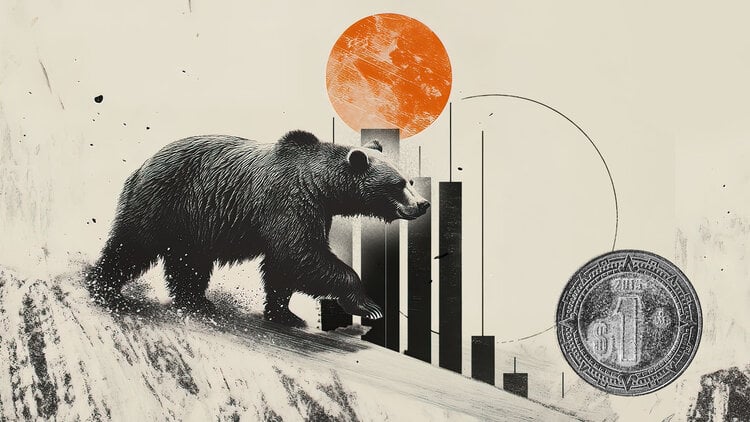Pressured inflation will be the common thread of the economy in 2022. With high prices, central banks around the world must tighten interest rates and governments must turn off the stimulus tap even more.
With less money flowing in, in a higher price environment, economies tend to lose steam.
In investments, this scenario translates into companies growing less, which is bad for equities, and fixed income paying more.
Added to the high interest rates and lesser stimuli are the new Covid-19 strains, the open and close accordion and the global energy crisis. More uncertainties that signal a loss of momentum in the economies.
After a rebound in 2021, helped by the weak base of comparison with the pandemic 2020, 2022 should be of lower growth. The International Monetary Fund (IMF) expects an advance of 5.9% of global GDP this year and 4.9% next year.
Another movement that should move the global tectonic plates is China. 2022 is the year that Xi Jinping is due to be reappointed for his third term and is also the year of the Winter Olympics.
For both reasons, the Chinese are likely to try to warm up the economy, which could boost commodities.
Brazil, as an emerging country, should have even higher interest rates and inflation around here and lower growth, a clear scenario of stagflation: stagnant economy, with high inflation. But the country will have one more ingredient in relation to foreign revenue: presidential elections and the volatility inherent in a polarized election.
Against this political-economic background, analysts summarize their perspectives for 2022, saying with conviction: it will be another year in which the market abroad will rise more than the domestic market; fixed income must be better than the stock market; commodities (value stocks) should rise more than techs (growth stocks); and it’s worth keeping China on the radar.
“It will be a more challenging year for the Stock Exchange. Interest rates are starting to be a headwind and the level from which we are starting with the shares is already well stretched”, assesses Marcos Mollica, manager of the Opportunity Total fund.
What the great global managers say
A good strategy for drawing perspectives is to observe what the big global managers, the money’s owners, say. The biggest is BlackRock, which has US$9 trillion under management — if it were the GDP of a country, it would be the third largest economy in the world, only behind the United States and China.
In the report “Thriving in a New Market Regime,” BlackRock summarizes its prospects for 2022 as follows: “We prefer equities against a backdrop of strong rebound inflation. We also prefer developed market stocks over emerging markets, as we have slightly reduced risk exposure amid rising risks to our baseline scenario. We have low exposure to developed market government bonds – we see yields gradually rising but remaining historically low. We prefer inflation-linked bonds, such as portfolio diversification.”
Below is a summary of four investment trends cited to CNN by experts for 2022 and how to surf each.
1) Fixed Income: “Not so sexy” but profitable
With the stock market down and interest rates up, the most obvious request for the Brazilian investor should be fixed income, a group that includes Treasury Direct bonds and bank bonds such as CDB, LCI and LCA. These are investment options that accompany rising interest rates.
With fixed income paying rates above double digits, experts see no reason to run the risk of the Stock Exchange, which should close 2021 with a drop of around 10% and continue in a bad mood in 2022.
“When you look at the Stock Exchange in dollars, it is cheap and this generates an attractiveness for foreign capital, which can give a certain boost to the Ibovespa at the beginning of the year, albeit limited.
But as the election approaches, the stock market should be completely unstable, because it will be a very truculent and polarized election”, says financial consultant Paulo Bittencourt, who has more than 30 years of experience in the capital market.
On the other hand, fixed income rates should remain attractive. “Interests should remain high for a reasonable period, there is still no room for cuts. Fixed income may not be as ‘sexy’ for individual investors, but they should look at fixed income at its current level, with bonds picking up 11%, 12% a year,” says Mollica.
Among the most recommended bonds are those linked to inflation, which pay an interest rate plus the IPCA variation, such as the Treasury IPCA and private credit bonds linked to the IPCA.
But these bonds can fluctuate in times of changes in the Selic rate and generate losses for those who redeem them before maturity.
A safer option for those who want to take advantage of high interest rates, with low risk, are the Treasury Selic bonds and post-fixed CDBs, LCIs and LCAs that do not generate losses if redeemed before the term.
2) Exterior is right here
For the investor who takes some risk, specialists recommend including in the portfolio variable income assets, such as shares, but preferably from foreign companies.
Today, it is possible to invest in these assets on the Brazilian stock exchange in two simple ways: buying an ETF, a share of a fund, traded on the stock exchange, which invests in assets of a certain stock index, in Brazil or in other countries; or BDRs, which are receipts for shares traded on exchanges abroad.
But which country to bet on? With US stocks rising more than 20% in 2021 and prospects for more modest global growth in 2022, analysts believe the US stock market could still rise, but far less than in 2021.
And they see opportunities in China, which was left behind with the Evergrande crisis and the economic slowdown in 2021.
In its 2022 outlook report, BlackRock says regulatory risks in the Chinese market are likely to remain but not increase because the government will not want to further cool the economy.
They also say they expect Beijing to gradually ease monetary and fiscal policies — which remain too tough on developed countries — to spur growth.
“We believe that the low exposure of global investors to Chinese assets is at odds with the growing weight of the Chinese economy in the world,” says the report.
Roberto Attuch Jr, CEO of Ohm Research, also believes in a reversal of the trend in China, with the return of Xi Jinping to power and the Winter Olympics, which should prompt the Chinese government to further stimulate the economy.
“Somehow, the Chinese managed to deflate the housing bubble and control the Evergrande situation. And Chinese assets are at historically low levels compared to the United States.”
Mollica adds that recent news about new stimulus in China has brought a backlash from Asian assets.
“This is what boosted the ore in recent weeks and I see room for more appreciation”, says the manager.
Paulo Bittencourt, on the other hand, has a cautious view of China. He prefers to invest in the United States, via ETFs that allow for a more thematic allocation. “Of the ETFs here in our B3 I recommend: IVVB11, BIBB39, BAER39, ALUG11, MATB11”, he says.
Translating alphabet soup: the IVVB11 replicates the S&P 500, an index that brings together the top 500 American stocks; BIBB39 follows the Nasdaq Biotecnology Index, comprised of US biotechnology and pharmaceutical stocks; ALUG11 invests in companies in the American real estate market; and the BAER39, replicates the Dow Jones US Select Aerospace & Defense index, which applies to stocks linked to the aerospace market.
3) Rotation from growth to value
Stocks, in general, lose attractiveness in a scenario of rising interest rates, which makes fixed income more attractive. But technology stocks have been the most affected because they are “long-lived” companies, that is, much of their cash flow is in the long term.
Therefore, when calculating whether these stocks are worth it, analysts discount the current interest rate and the higher the rate, the less attractive the techs are.
In addition, with China possibly rewarming its engines, the world’s biggest raw material buyer could return to the market with more force, boosting commodities.
Therefore, the market rotation movement may intensify, with investors migrating from the group of so-called growth or growth stocks – technology companies and startups, for example, which grow fast – to the group of value or value stocks – as well called cyclical stocks like bank stocks, commodities that follow economic cycles.
“Cyclic sectors, Europe and China are our main bets. In the United States, bank profitability will rise and cyclical sectors, industrial goods and commodities, value stocks, will outpace growth. But Europe can stand out because it has scholarships that are more based on the old economy, with more value”, says Attuch.
4) Less “fell, buy” and more criteria in stock selection
Inflation should make the task of finding good deeds more complex. “Not all companies can beat inflation by raising prices — which is why this is a stock-picking environment,” summarizes Olivia Treharne, portfolio manager at BlackRock Fundamental Equity, in the 2022 Outlook report.
In the same vein, Fernando Ferreira, chief strategist at XP, says that in 2022 the “came, bought” strategy will no longer work. “It’s not just any sector or stock that you should buy because the much higher interest rates and the weak economy will impact several sectors, especially those more dependent on credit and more leveraged companies”, he says.
Ferreira has a more optimistic view for the Stock Exchange than other specialists consulted because he believes that the Ibovespa is well discounted, so any positive news could lead the index to react. “The difference is that we are entering 2022 with very low expectations and the commodity cycle is very favorable to Brazil.” In the base scenario, XP predicts that the Ibovespa will reach 123 thousand points in 2022.
He says XP recommends three stock profiles for 2022: commodity-related companies, including Vale; companies with a secular growth thesis, which grow despite a more challenging economic scenario, such as Raia Drogasil; and companies that have fallen a lot but have good fundamentals, such as Banco do Brasil.
Among domestic assets, Paulo Bittencourt believes that the sectors that can take off from the most negative outlook for the Ibovespa are: “Energy in first place; second, paper and cellulose; and in third oil and gas.” All linked to commodities.
One way to be exposed to these sectors, says the consultant, would be to invest in ETF MATB11, which replicates the Exchange’s Basic Materials Index.
Reference: CNN Brasil
I am Sophia william, author of World Stock Market. I have a degree in journalism from the University of Missouri and I have worked as a reporter for several news websites. I have a passion for writing and informing people about the latest news and events happening in the world. I strive to be accurate and unbiased in my reporting, and I hope to provide readers with valuable information that they can use to make informed decisions.







